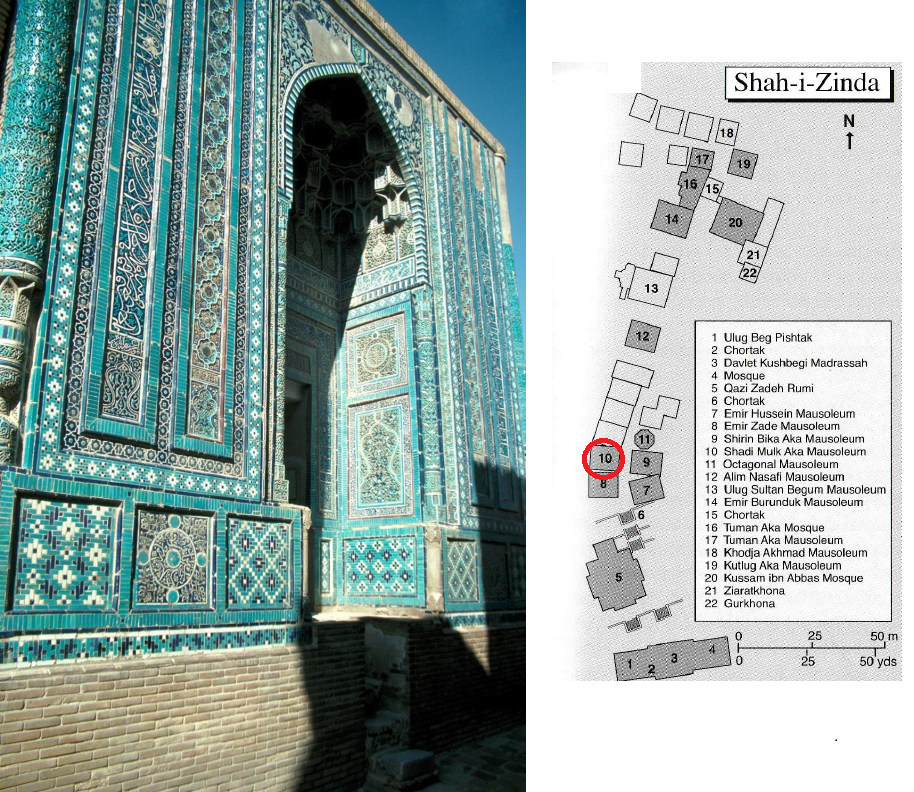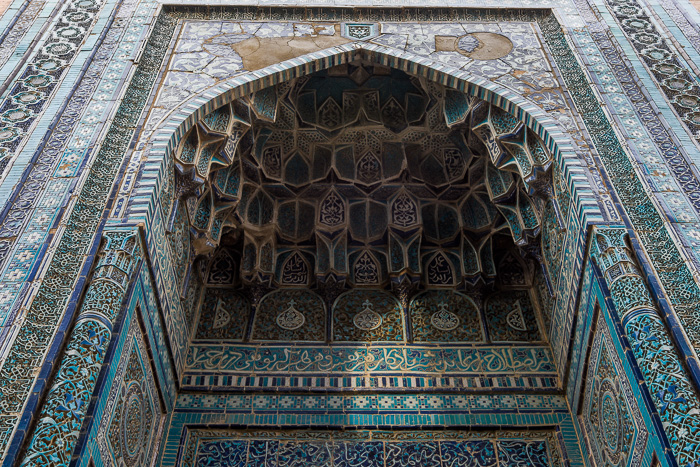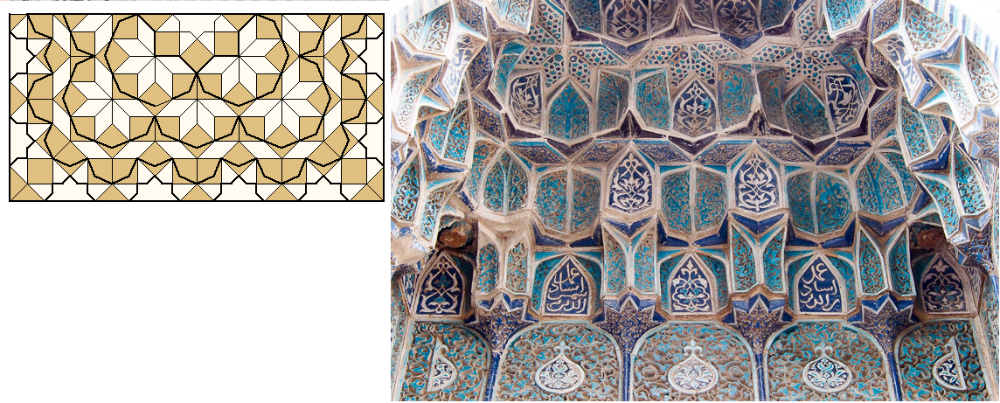10 Shadi Mulk Aka

The mausoleum of Shad-i Mulk Aka was designed after the model of earlier mausolea and constructed between 1371 and 1383 by an elder sister of Timur for her deceased daughter.
The mausoleum has a decorated interiorr as well as exterieur, setting a new standard.
An inscription framing the door says: “this building is like the smiling houris and silken veils that are like
white flour in the attractiveness of their appearance and beauty.”
Here the architecture is feminized through the inscription’s discussion of beauty which is likened to the effect of white flour, suggesting makeup. Houris are the inhabitants of paradise intended to provide those who enter paradise with pleasure.
(Houris are the virgins awaiting the pious in paradise.)
The inscription framing the door states: This is a garden in which lies buried a treasury of good fortune. This is a tomb in which a precious pearl has been lost. In it the one of Cyprus stature finds grace, one may take solace in that we both may be underground, consider that Solomon was carried away by a gust,
despite the fact that the seal of protection was in his ring.
These metaphors draw parallels between the individuals buried in the tomb and the architecture which contains them. The deceased can be considered the “pearl” while the oyster can be udnerstood as the tomb. An allusion is made to king Solomon who was protected by a ring but was still mortal.
All of the names of the builders and craftsmen are also listed in inscriptions on the building. None of the
inscriptions, however, are Quranic. Therefore, there is a language of piety developed in these tombs
without making references to Quranic verses.

In the muqarna of thist mausoleum too you can see the evolution towards the creation of stars, although clearly separated cells are arranged in horizontal layers.
Notice the subtle but very effective use of colours by colouring the edges white, the use of two shades of blue an the different decoration of the cells.
